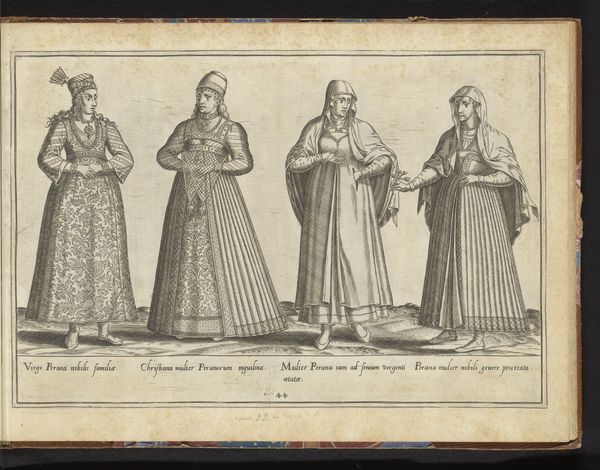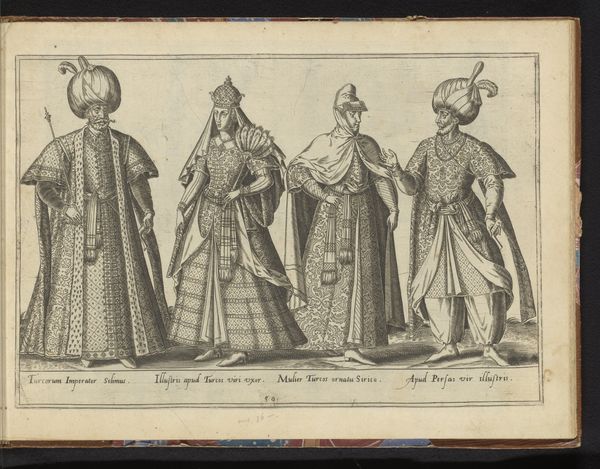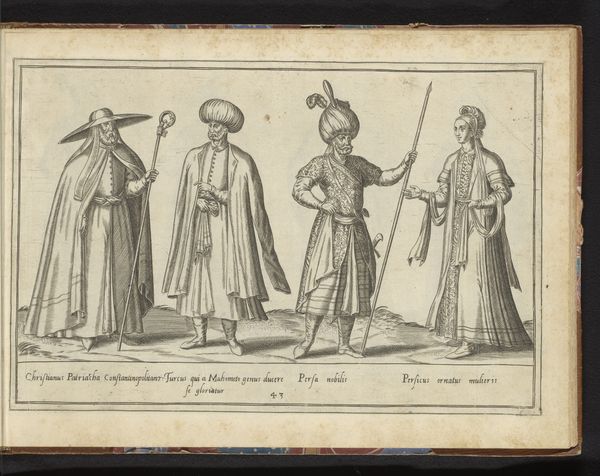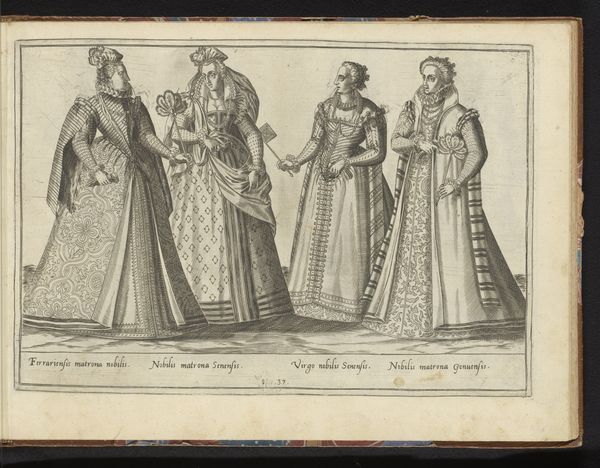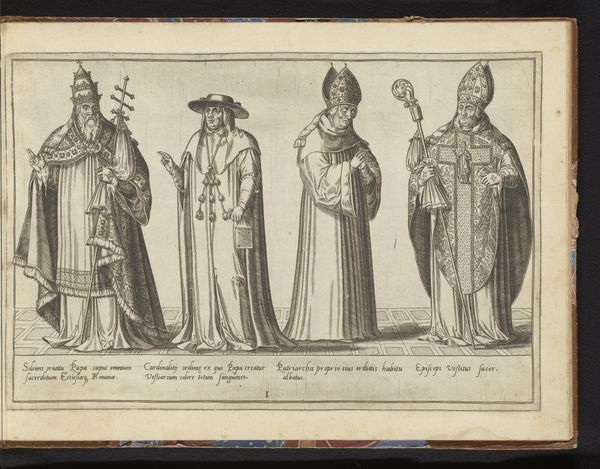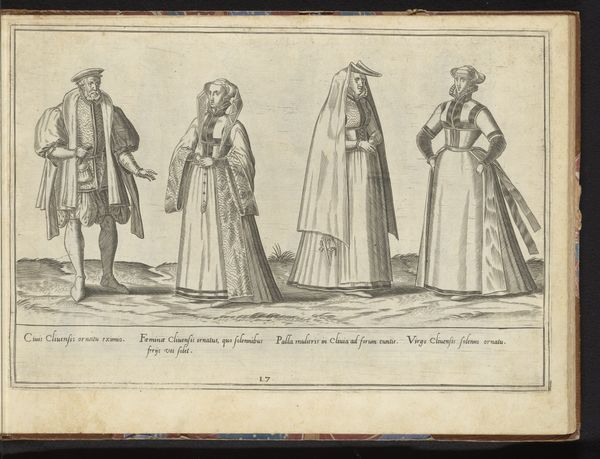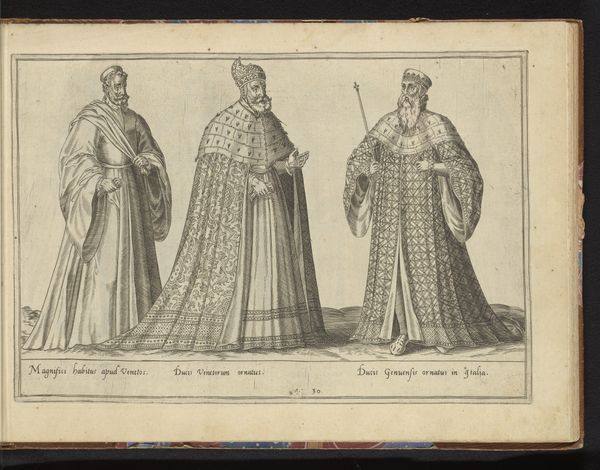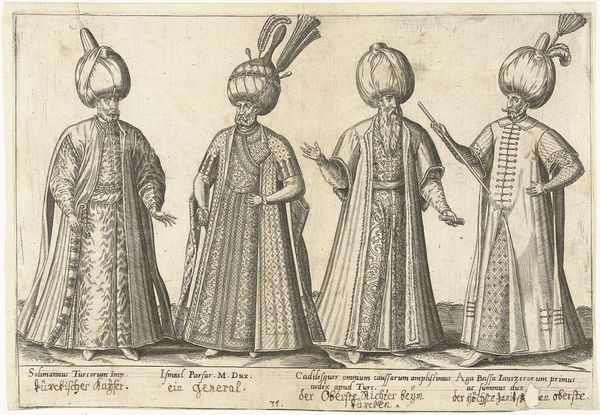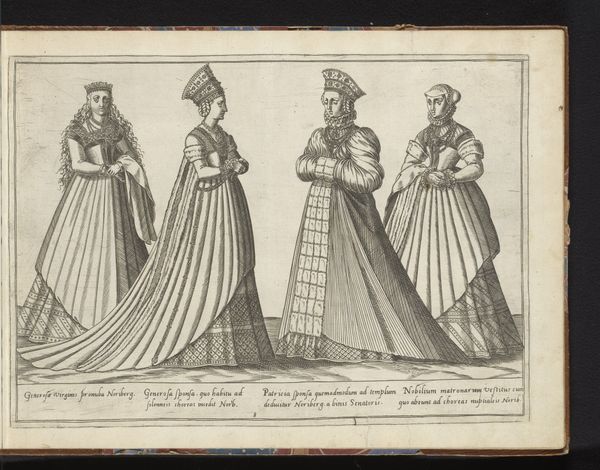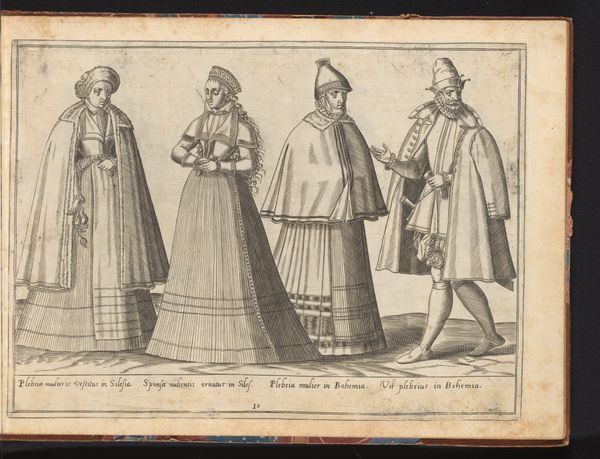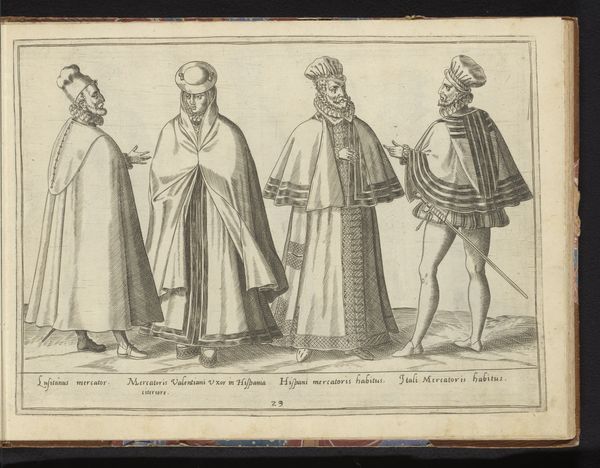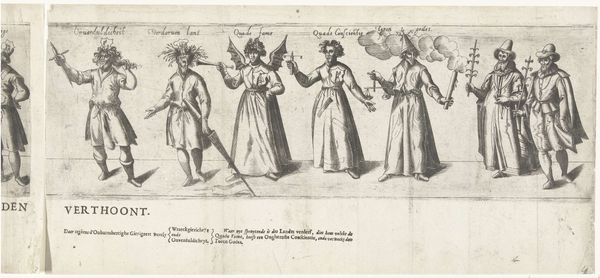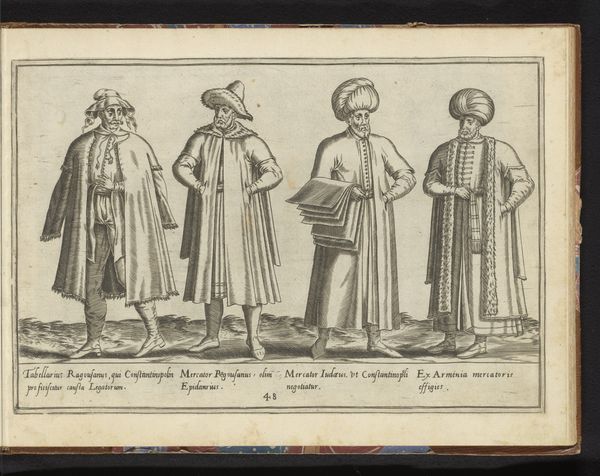
print, engraving
#
baroque
# print
#
figuration
#
orientalism
#
genre-painting
#
history-painting
#
engraving
Dimensions: 102 mm (height) x 135 mm (width) (bladmaal)
Curator: Immediately, I’m drawn to the meticulous detail and sense of formality. It feels like a stage tableau, carefully arranged. Editor: Let's delve into this engraving, "En hassanist eller indostaner og en benianer," which roughly translates to "A Hassanist or Hindustani and a Banyan." It was created around 1668 by Christian Rothgiesser. Notice how he delineates different societal roles through dress. Curator: Absolutely, the detail in the clothing is remarkable! Look at the layers and the texture of the fabrics, it's incredible how Rothgiesser created that through etching lines. The plate making process alone is really quite skillful. Editor: And it's precisely that material skill employed to depict these figures that we need to examine critically. "Orientalism" comes to mind. These depictions, intended as documentation, inherently exoticize and perpetuate a Western gaze upon Eastern cultures. Curator: Yes, the perspective is interesting; were the clothes created specifically for Westerners or the depicted cultures? Or maybe it represents a kind of performance of identity? Editor: I would also look into the historic socio-political moment and context surrounding this image and Rothgiesser's artistic practice, because images can work to enable further Western and white capitalist exploitative ventures in India at the time. Curator: Right. The printmaking industry itself, with its established guild system, facilitated the mass distribution of such imagery, influencing and shaping European perceptions of other cultures. It brings up the very labor-intensive aspect of printmaking, the social hierarchy inherent in workshop dynamics and the artist's creative autonomy at play here. Editor: Precisely, by studying this artwork as a cultural artifact, we can explore the intersections of early ethnographic representation, printmaking, and power dynamics in the age of exploration and colonialism. We should examine if there were sitters or other artwork models, too. Curator: Viewing Rothgiesser’s print through this lens illuminates not just the image itself, but also the means of production, dissemination, and interpretation in 17th-century Europe. Editor: Indeed, it reveals how artistic practices, even those seemingly benign, played a crucial role in broader historical processes.
Comments
No comments
Be the first to comment and join the conversation on the ultimate creative platform.
